The Significance of DIN Standard in the Seamless Steel Pipe Industry
The Significance of DIN Standard in the Seamless Steel Pipe Industry
In the seamless steel pipe industry, adherence to standards is crucial to ensure quality, compatibility, and safety. One prominent standard that plays a vital role in this industry is the DIN standard. In this article, we will explore the meaning of DIN standard and its significance in the context of seamless steel pipes.
What is DIN Standard?
DIN stands for “Deutsches Institut für Normung,” which translates to the German Institute for Standardization. DIN is a widely recognized and respected standardization organization based in Germany that develops and publishes technical standards for various industries, including the seamless steel pipe industry. DIN ensure uniformity, reliability, and quality across the manufacturing and application of seamless steel pipes.
DIN in the Seamless Steel Pipe Industry: DIN for seamless steel pipes cover a wide range of aspects, including dimensions, materials, testing procedures, and technical specifications. These standards provide a common language and framework for manufacturers, suppliers, and users to ensure that the pipes meet specific requirements and adhere to certain quality benchmarks.
Dimensional Standards:
DIN standards define the dimensions of seamless steel pipes, such as outer diameter, wall thickness, and length. For example, DIN 2448 specifies the dimensions for seamless steel pipes for general engineering purposes. These dimensional standards enable seamless compatibility between pipes produced by different manufacturers and facilitate proper fitting and installation in various applications.
Material Standards:
DIN standards also encompass the specification and classification of materials used in seamless steel pipes. These standards define the chemical composition, mechanical properties, and heat treatment requirements for different grades of steel. For instance, DIN 17175 provides specifications for seamless steel tubes used in elevated temperature service. Adhering to these material standards ensures the desired mechanical strength, corrosion resistance, and durability of the pipes.
Testing and Quality Standards:
DIN standards outline the testing procedures and quality requirements that seamless steel pipes must undergo to ensure performance and safety. These standards encompass non-destructive testing methods, such as ultrasonic or eddy current testing, to detect any defects or imperfections. Examples of such standards include DIN EN 10246 and DIN EN 10253. Compliance with these testing and quality standards guarantees that the pipes meet the necessary performance criteria.
Benefits of DIN Standard:
The adherence to DIN standards brings several advantages to the seamless steel pipe industry. Firstly, it ensures consistency in terms of product specifications, which simplifies the selection and interchangeability of pipes. Secondly, DIN standards enhance product quality and reliability, as they provide guidelines for manufacturing processes and quality control measures. Finally, DIN standards contribute to international harmonization, as they are recognized and adopted beyond Germany, promoting global cooperation and standardization.
This standard, established by the German Institute for Standardization, is a crucial framework in the seamless steel pipe industry. It encompasses dimensional, material, testing, and quality standards to ensure uniformity, reliability, and safety. Adhering to DIN standards facilitates compatibility, enhances product quality, and promotes global cooperation. Manufacturers, suppliers, and users in the seamless steel pipe industry rely on DIN standards for the production, selection, and application of pipes.
“Examples of Steel Pipes Manufactured According to DIN Standard”
- DIN 2448 Seamless Steel Pipes: DIN 2448 is a standard that specifies the dimensions and technical requirements for seamless steel pipes used in general engineering purposes. These pipes are commonly used in industries such as construction, machinery, and automotive. They are known for their precision in dimensions, high tensile strength, and excellent resistance to pressure and corrosion. DIN 2448 seamless steel pipes are available in various grades and sizes to meet different application needs.
- DIN 1629 St52.0 Steel Pipes: DIN 1629 is a standard that covers non-alloy steel tubes used in applications requiring high tensile strength and resistance to extreme conditions. St52.0 is a grade of steel commonly found in DIN 1629 steel pipes. These pipes are known for their excellent weldability, impact resistance, and dimensional accuracy. They are widely used in industries such as oil and gas, petrochemical, and power generation.
- DIN 17175 Heat-Resistant Steel Pipes: DIN 17175 specifies the technical delivery conditions for seamless steel pipes used in elevated temperature service. These pipes are designed to withstand high temperatures and pressure, making them suitable for applications in boilers, heat exchangers, and power plants. The heat-resistant steel pipes produced according to DIN 17175 exhibit excellent thermal stability, corrosion resistance, and mechanical strength at elevated temperatures.
- DIN EN 10216-2 P235GH Steel Pipes: DIN EN 10216-2 is a European standard that specifies the technical delivery conditions for seamless steel pipes used in pressure purposes. P235GH is a grade of steel commonly used in these pipes. They are characterized by their good weldability, high strength, and excellent formability. DIN EN 10216-2 P235GH steel pipes find applications in industries such as oil and gas, chemical, and manufacturing.
Steel pipes produced according to DIN offer reliability, performance, and compliance with stringent industry requirements. DIN 2448, DIN 1629, DIN 17175, and DIN EN 10216-2 are just a few examples of the standards that ensure the quality and suitability of steel pipes for various applications. Understanding these examples provides valuable insights into the types and characteristics of steel pipes that conform to DIN standards.

